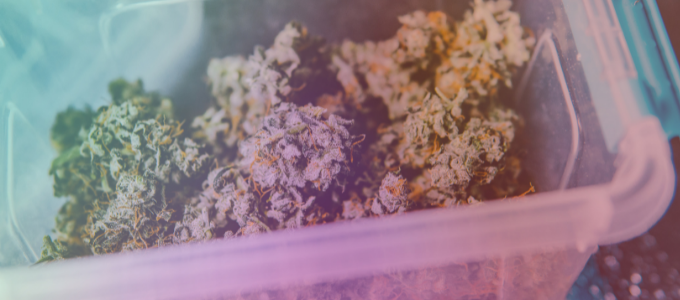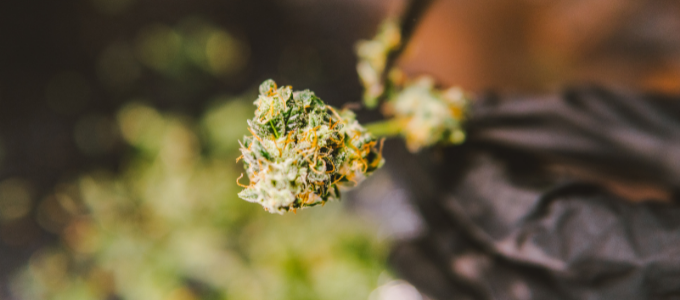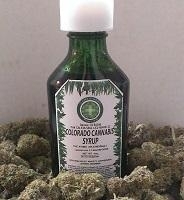
Maybe you’ve heard of a nifty lil’ cannabinoid called THCV. Perhaps it was from your cool smoker buddy who always is up on the newest type of dab, extract, edible, and exotic flower there is to offer. Maybe it was from your crazy uncle Eddie at the family reunion while he was smoking a doobie of high THCV flower at the same time shouting at his overgrown rottweiler to get off the table and eating the snack platter that Gamgams put out for everyone to munch on. Or, perhaps you’ve never heard of it at all and have no idea what you’re reading about and this article is going to go into.
If so, then check out our helpful and informative blog about THCV Edibles.

What is THCV?
THCV is a non-psychoactive compound found in cannabis. THCV is a cannabinoid. THC and CBD are also cannabinoids. While it is similar in chemical structure to THC or Tetrahydrocannabinol, the effects it can have on the body are much different. THCV has a less psychoactive release in the brain than THC. People who use THCV report having more energy, less appetite, and feeling less lethargic than consuming something with higher THC. This is because the way our bodies are able to process cannabinoids is through our own Endocannabinoid system or (ECS).
THCV, THC, and CBD all innervate with receptors in the ECS differently which produces the different reactions we have to consume them. The ECS helps to regulate our physical and mental well-being, appetites, sleep schedules, and even hormones can be affected.
This article is going to walk through some of the top strains that have higher than average levels compared to other strains.
Where Is THCV Found?
The origins of high THCV strains can be traced back to some OG landrace strains in Africa and surrounding areas.
These strains are Sativa dominant and usually average at around 15%-23% THC as well.
Sativas are known for giving more of a creative head high rather than a lethargic couch-lock that people associate with Indicas.
People began to notice the differences between smoking different strains and started to seek out sources of the different types of highs. Sativas became known as "the daytime smoke" because as many people say, it gives them energy, makes them feel more creative, and can do the opposite of munchies and help to curb an appetite.

Popular THCV Strains
Durban Poison
This is probably the most well-known strain on the list, or at least it was to us. This strain is super Sativa dominant. It is popular for a nice afternoon bong snap. It gives off creativity and energy as for its main side effects. It puts out a sweet and earthy aroma when smoked. Artists favor this strain for its highly Sativa effects. It is usually round and chunky in bud structure and covered in trichomes giving it that frosty sugar-coated look. This strain is one of our favorites down here at Cannasaver.
Pineapple Purps
Pineapple Purps is a strain that has grown in popularity over recent years. This strain has an average of 3:1 THC to THCV giving it highly psychoactive properties. It has a sweet aroma that smells fruity and gives off a pineapple essence. When smoked it tastes like sweet berry wine. It gives uplifting energetic effects when smoked and leaves you feeling with a head in the clouds high with bursts of energy. This high THCV strain is used medically to treat anxiety, appetite loss, and mild cases of depression. It possesses dark green leaves, slightly purple hairs, and is frosty with trichomes giving it a beautiful look and an even better smoke.

Power Plant
Power Plant is another African Sativa strain on our list. This popular strain is a hybrid of Sativa and Indica with a split of around 65% Sativa and 35% Indica. It has a higher than average amount of CBD making it a perfect blend of all different types of effects. It will give you energy and also relax you. Power Plant has light green leaves and a nice rich dusting of trichomes on the outer leaves. This gives it a sweet and earthy aroma that tastes a bit like limes. It’s known to give a clear-headed high with lots of energy.
Red Congolese
With more people smoking cannabis now that it is recreationally legal in many states and medically legal in most of the states in the country, nonpsychoactive strains are at the top of people’s to-try lists. This stain is no exception to that. Red Congolese is a strain that gained popularity in California. When grown it has an Indica like bushy structure but possesses the uplifting creative effects of a chronic Sativa. It also has uplifting and creative effects when smoked or consumed. It promotes mental clarity and has been used to help treat Alzheimer’s with promising results shown in this study. This is a popular afternoon or wake-and-bake smoke for many people that struggle with nausea or tension.
Doug’s Varin
This unique strain is known to suppress appetite due to its high levels of THCV. It has been selectively bred over generations to gain the highly Sativa effects it gives. It averages around 19% THC when tested. It is a pure Sativa and boy does it smoke like one. Doug’s Varin gives off a piney, earthy smell. It tastes like sweet citrus when smoked. It usually flowers in 8-9 weeks making it a great choice for both indoor and outdoor growers. Along with appetite suppression, Doug’s Varin also is used to treat depression, muscle spasms, and stress.
Thanks for checking out our blog on THCV weed strains.
We hope you’ll go check out some of these strains at your local favorite dispensary soon!
Continue Reading










